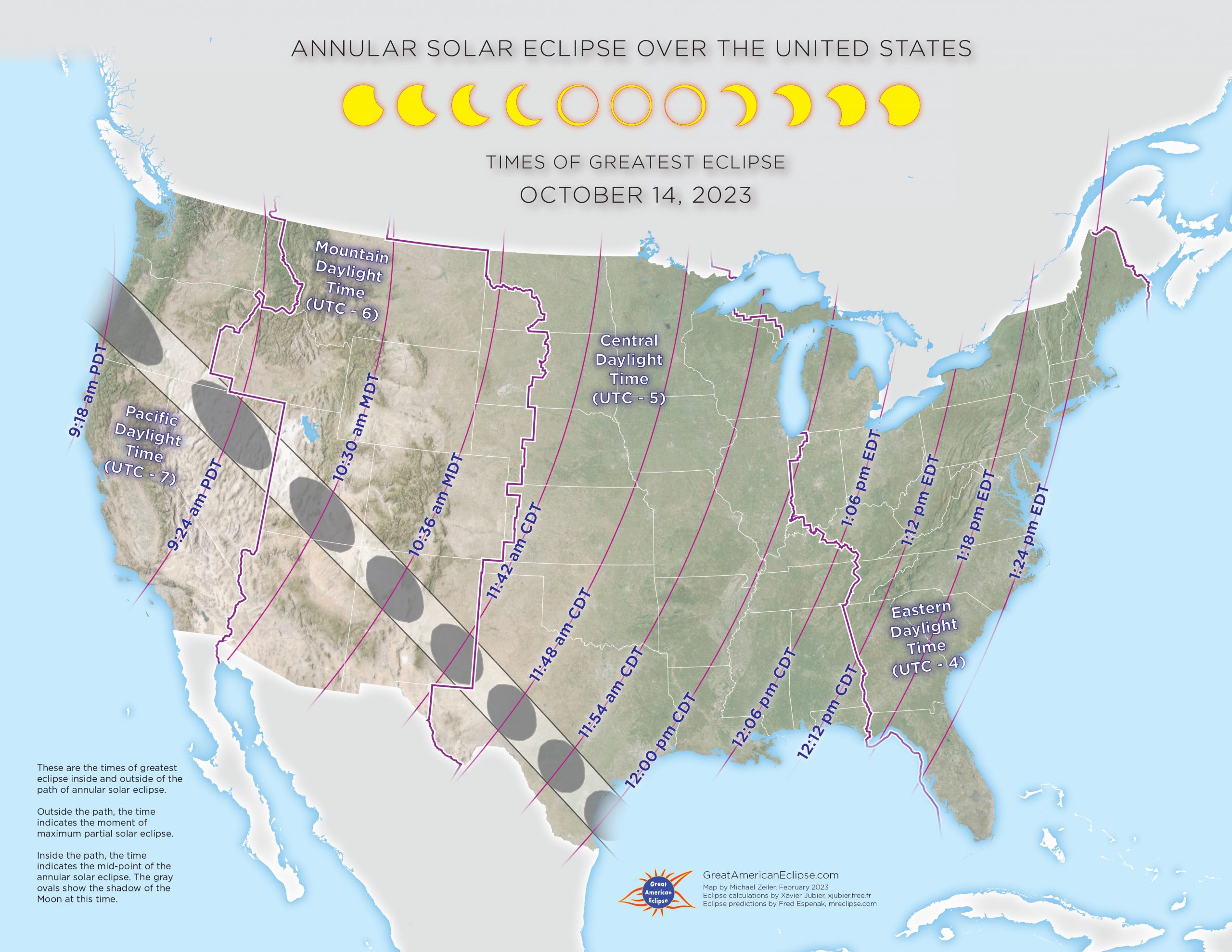October 14, 2023 Eclipse
A StoryMap with October Climatology, fun eclipse facts, and local weather information for October 2023
General Info
The next annular solar eclipse will be on October 14, 2023. Don't forget to be safe during this event by wearing proper eclipse sunglasses and sunscreen. For more information on eclipse safety, visit: https://solarsystem.nasa.gov/eclipses/2023/oct-14-annular/safety/
Path of annular solar eclipse, along with lines of maximum partial eclipse (location along 90% line will experience a 90% totality) Source: GreatAmericanEclipse.com

Path of the 90% annular solar eclipse, along with lines denoting the times of the greatest eclipse. Source: GreatAmericanEclipse.com
Eclipses require a specific set of circumstances to be met. In order for the moon to block out the entire sun, a new moon must be directly in sun’s path and must be a specific distance away from the Earth. The variation in distance of the moon from the Earth and the changing angle of the moon make a solar eclipse difficult. When a total eclipse does happen it is usually visible for less than three minutes. A partial eclipse may be visible for longer. Visit NASA’s How Eclipses Work for more information.
Information about what an Annular Eclipse is. Credit: Patrick McCullough in WFO San Angelo, TX.
This will be an Annular Eclipse, also called a "Ring of Fire" Eclipse. See the graphic to the right for more information.
Climatology
Below are climatology graphics for mid October, which may suggest your chances of clear skies during the eclipse.
Weather Information
Click on any of the points below to obtain forecast information nearest your location.
Click on an Orange dot for links to local forecast information. Don't see your city? Visit https://www.weather.gov/ or https://www.weather.gov/forecastpoints for more local forecast information.
Fun Facts!
- The sun is 400 times wider than the moon, but it is also 400 times farther away, so they coincidentally appear to be the same in size in our sky. This is what allows us the phenomenal beauty of the total solar eclipse (source: NASA).
- In 1999, Irish Archeoastronomer Paul Griffin investigated the Loughcrew Cairn L Megalithic Monument in Ireland, and discovered a set of spiral-shaped petroglyphs that might correspond to a solar eclipse which occurred on November 30, 3340 BCE. This is regarded as one of the oldest documented solar eclipses in history (source: NASA).
- Eclipse shadows travel at 1,100 miles per hour at the equator and up to 5,000 miles per hour near the poles (source: NASA).
- Total solar eclipses happen about once every year or two and can only happen during a new moon (source: NASA).
- Temperatures during an annual solar eclipse could drop several degrees! The Lincoln, Illinois NWS office observed a temperature drop of 4 degrees in the annual solar eclipse in 1994! ( https://www.weather.gov/ilx/may94eclipse )